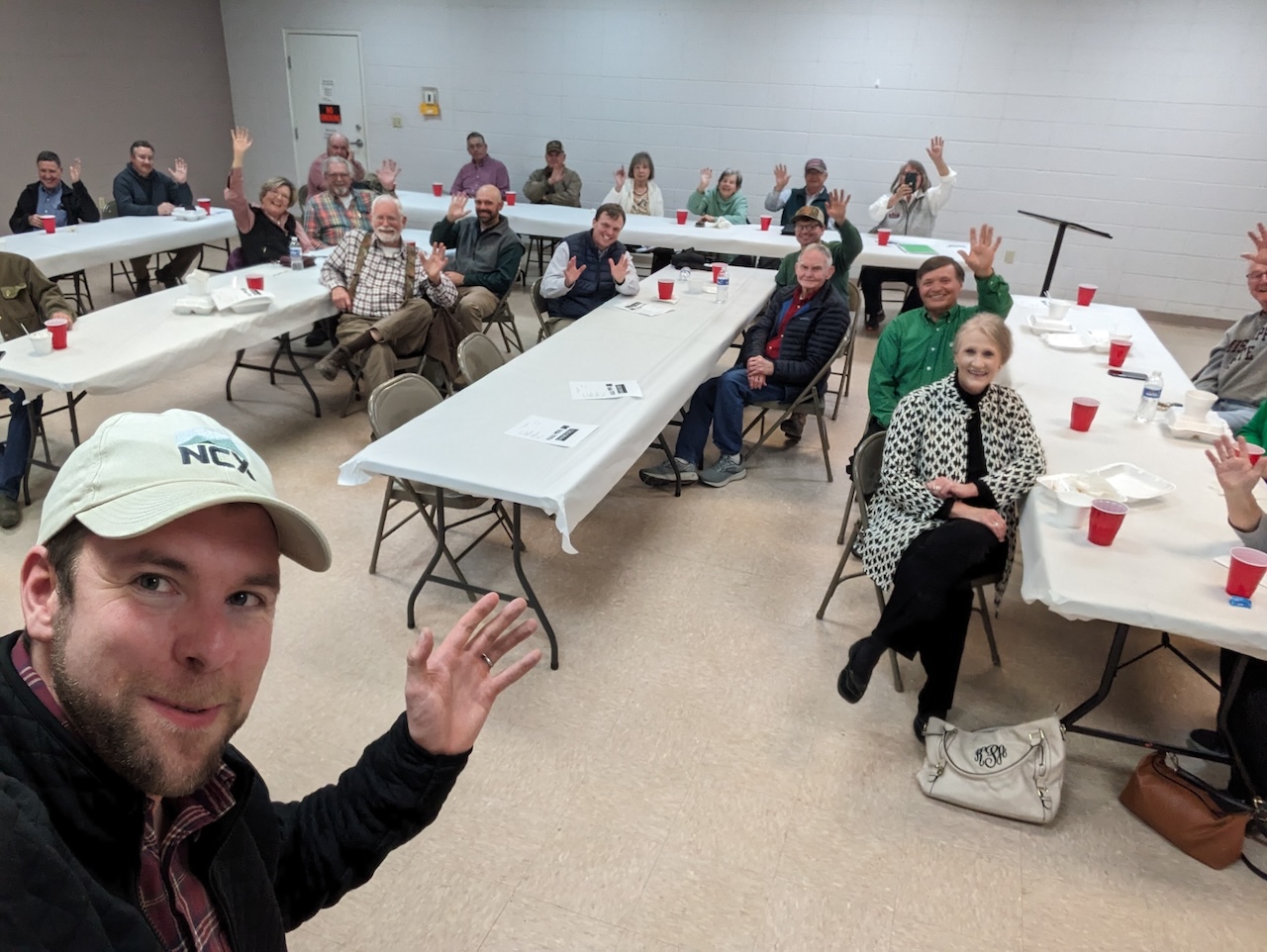On March 29th, a group of climate leaders including Zeke Hausfather of Stripe, Alicia Seiger of Stanford, Elizabeth Sturcken of Environmental Defense Fund, Zack Parisa of NCX, and moderator, Shyla Raghav from CO2 – TIME gathered in NCX’s “Treehouse” in San Francisco to discuss and debate the challenges facing nature-based solutions, and the voluntary carbon market.
Conversations like this are critical to reliably scaling up nature-based solutions. As a society, we know we can’t wait to invest in nature if we want to meet our global climate goals. At the same time, investment is stalling in nature-based carbon projects due to uncertainty and risk. If we’re truly going to protect and restore nature while using the carbon market to address climate change, getting the details right is critical.
Despite different backgrounds, everyone in the room shared a common goal – to improve climate outcomes. The panelists all brought valuable perspectives to what is holding back the carbon market and nature-based solutions. We encourage you to watch the recording and contribute your thoughts in the comments. Here are a few of the key takeaways from the discussion.
1. Reputational Risk is Stalling Investment
“There’s so much concern around reputational risk and loss of credibility. A place like SBTi has so many stakeholders that it is hard to make a move. It’s the same for certification bodies, it’s hard for them to make a move now that isn’t absolutely perfect.”
Zack Parisa, Co-founder and CEO, NCX
Of the risks discussed, reputational risk stood out for its profound impact on cooling market investments and slowing progress. Press pieces on greenwashing and carbon projects underperforming from Bloomberg and others leave fear in the hearts of many companies. Instead of making public pledges and investments in the carbon market, companies are choosing to pause out of fear of making headlines for miscalculated purchases. It’s a familiar tale of bad news making better headlines than good.
The resulting scenario puts progress in the hands of the few investors, developers, and other stakeholders who are willing to make careful bets on what they believe will be high-quality projects. In this case, there are notably fewer headlines praising an organization’s push for progress than there are condemning any shortcomings.
Recent hesitation in the carbon market led the panelists to unanimously agree on a single point – the biggest risk is inaction. It was pointed out that investments can be made in carbon credits despite uncertainties. Advances in technology, and approaches such as carbon accounting and dynamic baselines are making investments more transparent, adding in corrective mechanisms to combat uncertainty.
2. Regulation & Guidance Isn’t Clear and Actionable
“I think it’s undeniable we need to remove a lot of carbon from the atmosphere quickly and a lot of that has to be through nature-based solutions. There is a strong need for higher standards in the space than what we have today, but I think the key is to make sure we don’t throw the proverbial baby out with the bathwater.”
Zeke Hausfather, Climate Research Lead, Stripe
Regulation and guidance were brought up multiple times throughout the discussion. Common themes within the opinions expressed were that:
- We need to improve standards and guidance within the voluntary market while still allowing for innovation
- We need to adopt our learnings at scale to create impact beyond the Voluntary Carbon Market (VCM)
Because the voluntary carbon market inherently has to self-govern, there’s an underlying need for improved collaboration and cooperation among all stakeholders. Notable examples of evolutions in corporate guidance were mentioned, like SBTi’s upcoming guidance on Beyond Value Chain Mitigation (BVCM) and the standards from The Integrity Council on Voluntary Carbon Markets (ICVCM).
Panelists also pointed out that we must remember the organizations developing methodologies, certification standards, and carbon credits ratings are working to figure things out as fast and as well as they can. It’s important that we support them with investments, both monetary and voluntary (offering time from experts) to help improve the rate at which we adapt our standards to guide the VCM in the right direction.
3. Carbon Accounting is in its Infancy
“Until we create an obligation through a balance sheet where you’ve got emissions categorized as a liability that needs to be managed, we’ll be missing a really critical part of the path to net-zero that we’ve got to crack.”
Alicia Seiger, Managing Director, Sustainable Finance Initiative, Stanford Precourt Institute for Energy
Alicia Seiger framed carbon accounting as a potential force multiplier for adoption by mitigating risk in the voluntary carbon market through increased transparency. Using the well established principles of financial accounting, carbon accounting helps quantify the impact of an organization’s business activities where the bottom line is measured climate impact in the form of emission liabilities and assets. Applying this practice would make it clear who can actually claim what reductions or removal activity, further improving the rate that investments are funneled.
In addition to the clarity of ownership, Alicia Seiger said carbon accounting simplifies the measurement and application of carbon projects with different durations. Carbon buyers can blend their portfolio with investments across projects of all types, record those assets in a standard manner, and set actions in place for their expiration like a repurchase or a transition into a more permanent storage solution.
4. It is Hard to Balance Near Term Action and Long Term Investments
“We have a crisis of nature, and if we don’t solve that right now there’s no path for a stable climate. While we need integrity and continuous improvement, we also have to address climate change in a robust way.“
Elizabeth Sturcken, Managing Director, Corporate Partnerships at Environmental Defense Fund
One point of nuanced disagreement was the timing of action vs. correction of market mechanisms. Should we prioritize improving regulation and accounting while pausing action or taking action while improving regulation and accounting methods? While any action taken today that protects or preserves natural resources is likely to be a good action, does choosing that investment of resources further stagnate market progress towards defining better standards?
The common thread of agreement here was a call for elevating and supporting companies who are taking innovative approaches that support high-quality initiatives within the VCM. The efforts of these leaders will help shape the future market norms, standards, and regulations. Acknowledging criticism for projects with less-than-expected outcomes is certainly necessary, but doing so in a way that is constructive, rather than sensational has a profound effect on the rest of companies who either have, or are considering making a net-zero commitment.
Our speakers also pointed out that history has lessons for us here. Action has been taken despite risks before, in the development of solar power, wind power, and Direct Air Capture (DAC) mechanisms. It was pointed out that in this context, nature-based carbon removals are the metaphorical “ambulance ride to the hospital” for the climate. They create a critical bridge to the decarbonized economy that we all need. Therefore it’s worth acting in the face of risk again to ensure we have the ability to achieve positive climate outcomes in the future. Otherwise, inaction may cause us to lose that chance.
In order to take action today, there were pre-requisites all panelists made a point to emphasize for businesses:
- Start by understanding your emissions by source
- Align yourself with scope 1 and 2 mitigation strategies
- Do not use offsetting mechanisms to compensate for emissions that you are able to reduce today
Conclusions
Having conversations amongst people with differing opinions is constructive for progress, and rapid progress on climate action is NCX’s primary goal. Clarity was found on areas of key concern by bringing together a diverse set of some of the brightest minds in the industry, mainly what steps need to be taken and when. It is the collective hope of these panelists that this discussion helps to incentivize high-quality investments in nature through the voluntary carbon market. There are several threads left open, because the situation is complex and ever-changing but a few things were clear:
- Taking actions to protect and restore nature should be done without hesitation (given you are on track for your scope 1 and 2 emissions)
- Establishing greater trust through transparency and a focus on high-quality projects will propel the market forward with examples of ‘what good looks like’
- Improvements in carbon accounting will serve as a ‘quality multiplier’, ensuring we can measure carbon mitigation, avoidance and removal activities with the same yardstick – balancing it against emissions appropriately
Check out the full panel discussion here.



